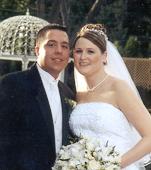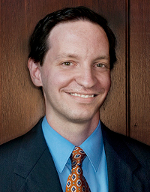There is no such thing as an accurate 20-year business plan, which leads me to wonder how the business I launched 20 years ago turned out almost exactly as I envisioned.
I could put it all down to luck. I could credit my own technical and management skill. I could shrug and just say that my colleagues and I are exceptions to the rule. All of these elements may be at work to some degree.
But I think the biggest reason is that I was not content to be a flea on the dog’s tail. I wanted to be the dog, and I had a pretty good idea of what kind of dog I wanted to be.
At the end of 1992, I left Arthur Andersen, then the world’s biggest accounting firm, where I was a senior manager in the personal financial planning practice. Like all big accounting firms, Arthur Andersen’s core business was auditing and consulting. The corporate-oriented tax department was an adjunct to the audit work. Or, as I put it in those days, audit was the dog and tax was the tail. And personal financial planning - mostly offered to executives of companies Andersen audited - was a flea on the dog’s tail. It was a trivial part of Andersen’s business.
I expected to be made a partner if I stayed at the big firm, but then my professional life would have been in the firm’s hands. Andersen might have decided that it just did not want to be in the personal financial planning business, and I would have had to do something else. Or it might have decided that it needed my services as a personal financial planner somewhere else, in Omaha, for example, rather than in Manhattan where I was based. My wife, Linda, and I had two small children at the time. With all the grandparents living in the Northeast, moving to Omaha might have gotten us sued over custody of our own kids.
So I decided to start my own firm. Linda found a small office for me in a converted movie house in Hastings on Hudson, N.Y. We lived in Yonkers, about a mile away, but we hoped to eventually move to Hastings, which we did a few years later. Hastings is across the Hudson River from the New Jersey cliffs known as the Palisades. Those landmarks inspired my company’s name, Palisades Hudson Financial Group LLC.
From the outset, I knew a lot about the kind of business I wanted to have. Knowing what you want is a big step toward getting what you want.
I wanted to work for the same types of clients I had served at Arthur Andersen. They would be senior executives, business owners, creative or athletic individuals, and families that had significant wealth. Clients like these have complicated financial situations, meaning I could be a big help to them, and they also can afford highly skilled professional advice, which is important to anyone who wants to stay in business as their adviser.
I believed that what is usually called “financial planning” is much too fragmented to be very useful. Fellow accountants (I am a CPA) like to talk about income taxes. Lawyers draft wills and trusts. Insurance agents sell insurance. And stockbrokers – they were still called stockbrokers at that time – and other investment managers use the terms “financial planning” and “investment management” almost interchangeably. I was convinced that effective advice had to combine these elements and many others, such as charitable planning and financial recordkeeping, as seamlessly as possible. So I set out to help my clients in all of these areas at once. Investment planning, being more highly regulated, was a little more complicated. At first I just told clients what I thought they should do, but when they had trouble doing it on their own, I launched an affiliate that became a federally registered investment adviser. It started with about $30 million under management in 1997, and has about $1.1 billion under management today.
Apart from managing investments, I had done a lot of these things at Arthur Andersen, but going on my own allowed me to address issues in my own way. People like to use credit cards, for example. Big accounting firms at that time did not accept credit cards. But almost as soon as I opened my doors, I did.
Professional firms typically charge clients hourly rates. This is a problem when you really want your clients to come to you with situations that might - or might not - present problems to solve or opportunities to exploit. A client may not call you to ask what seems like a simple question if it could mean sending you off on hours of research, with a big bill at the end. So for most of my work, I adopted a policy of charging flat fees that would be agreed upon ahead of time. I encouraged clients to call whenever something was on their minds. If I could answer a question right away, I did so for free. If the issue required more research or analysis, I would provide a fixed-fee quote ahead of time, and the client could decide whether it was worth the cost to proceed. For the past 20 years, this has practically eliminated the unpleasant process - which had been a big part of my job at Andersen - of billing and collecting fees from clients after the work was done. Eliminating fee surprises made for much better relationships with clients, too.
I knew also that I wanted to start a newsletter, but not one that would be as bland as the typical accounting or law firm publication. Most of those try to avoid expressing opinions that might offend anyone. I wanted my newsletter to convey my most worthwhile thoughts to people who knew me, and to be an effective introduction to people who did not. So I occasionally took positions in my articles knowing full well that some readers would strongly disagree. This happened when I questioned the economic foundation of long-term care insurance, when I described Social Security’s funding as consisting of little more than government IOUs, and especially when I endorsed same-sex marriage and described the Defense of Marriage Act as indefensible as soon as it was passed.
The newsletter, Sentinel, has drawn some angry letters, but it has also attracted fan mail. I have never heard of another financial firm newsletter that received fan mail. (The article “Sentinel Chronicles The Issues Of An Era” recounts some of the topics we have covered in Sentinel over the years.)
Most of all, I knew that I wanted to create a real firm, just as a man named Arthur Andersen had founded a firm in 1913 that survived his own death in 1947. I did not want to merely be a sole practitioner who keeps his hands on everything until, one day, he lands facedown in his cornflakes, at which point his clients and employees are left to fend for themselves.
The kind of firm I wanted requires two things: clients who want it to serve them, and people who have the skills to do it.
During that first year, as I worked alone in my small office, I had very few clients, so I wrote a book (the first to specifically address financial planning for unmarried couples) and started publishing the newsletter. The newsletter was noticed by an executive at Bankers Trust, who hired me for a series of consulting projects. That kept me busy until a large paper company retained me to help its senior executives manage their personal financial matters. At that point, I knew I had enough recurring business to ensure that I could make a living. New clients found their way to me from press interviews, via the book and the newsletter, and most of all, by referrals from existing clients and from professionals who knew me.
Meanwhile, Linda came to work part time as our girls got older, and she established the firm’s recruiting and marketing functions. We hired most of our staff straight out of school. Our goal, for those who proved to be a good fit, was to keep them with us as long as possible as they developed the skills to do my work as well as I, or even better. Today, our staff is a close-knit group of about two dozen, spread across the country but operating as a single team.
We back each other up if there is illness or death in our families. When someone wants to work a reduced schedule after the arrival of a child, we accommodate his or her needs. Together, we celebrate marriages (I have been to eight Palisades Hudson weddings so far), new babies, confirmations and bar mitzvahs. We help one another through the loss of parents, grandparents and other loved ones.
We relate to most of our clients in a similar way. Many have watched members of our staff mature professionally and take over the day-to-day handling of their affairs. The people we serve take a personal interest in the folks who work here, cheering each promotion and accomplishment.
Our clients today include children and grandchildren of people I first counseled 20 or even 25 years ago, going back to my Arthur Andersen days. There are some great-grandchildren on our client list, too. They are still young enough that, apart from handling trusts and tax returns for their benefit, the majority of my service consists of buying an occasional toy or book to amuse them.
If my luck holds, I will be able to stick around for another 20 years to see these fourth-generation clients grow to adulthood. Maybe I will even be introduced to a fifth generation. Two decades from now, the oldest of our current staff will be in their 50s, as I am today, and the youngest will be about midway through their careers. That sounds like it might be a pretty good time to hand over the reins.
I might not make it that far, of course. Life is much too uncertain for anyone to count on 20-year plans. But my experience shows that sometimes we get exactly what we want, especially when we know we want it.
Best New Year’s wishes to all the clients and friends who make the journey so rewarding, to the colleagues who make coming to work every day a joy, and to Linda, who has been with me every step of the way.











